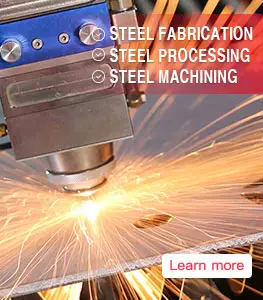Welcome to BBN Steel Materials Factory
The difference between 45# steel and Q235 steel

Different Representations of Grades
45# steel represents the chemical composition of the steel. The average carbon content of this steel is 0.45%, corresponding to the Japanese standard S45C, American standard 1045, and German standard C45. Q235 steel represents the mechanical properties of steel. The Q in the steel grade represents the yield limit of this material, and the following 235 indicates a yield value of around 235MPa.
Different Yield Strengths
The tensile strength of 45# steel is ≥ 600 MPa, and the yield strength is ≥ 355 MPa. Q235 steel has a tensile strength of 370-500 MPa and a yield strength of about 235 MPa. Generally speaking, the yield value of Q235 steel decreases with the increase of material thickness.
Different Welding Performance
The welding performance of 45 # steel is relatively poor, while Q235 carbon steel has much better welding performance, so many factories choose Q235 material for welding components. In our factory, we usually choose Q235 as the welding material, such as some parts such as frames, welding flanges, and bases.
Different Hardness
The hardness of 45# steel itself is lower than HRC28, while the hardness of Q235 steel itself is below HRC20, so the hardness of Q235 steel is lower than that of 45 steel. Excluding welding, in terms of stress, 45 # steel is stronger than Q235 steel.
Differences in Processing Performance
45# steel has a higher hardness than Q235 steel, so Q235 steel is easier to process compared to 45 steel. Q235 is suitable for situations where mechanical requirements are not too high.
Sheet metal parts are more suitable for using Q235. 45# steel has thinner sheet metal than Q235 steel, but most of the situations I see use Q235 as the sheet metal material, because Q235 steel, such as "soft", has better ductility than 45 steel.
Heat Treatment Differences
The most common heat treatment methods for 45# steel are quenching and tempering, and quenching is mainly surface quenching. If the tempering temperature of 45 # steel is controlled between 500~600 ℃, its hardness range is HRC22~HRC33. After surface quenching, the hardness of 45 # steel can reach around HRC55. Q235 is generally used upon purchase and rarely undergoes heat treatment. The heat treatment effect of Q235 is also not very good, and economic considerations generally do not require heat treatment.
.webp)
.webp)
.webp)
.webp)
.webp)
.webp)
.webp)
.webp)
.webp)



Leave a Message